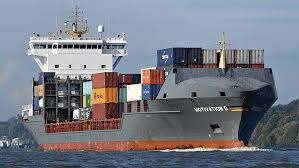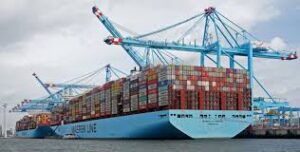History of East African National Seamen Union

Sheikh Abeid Amani Karume worked aboard British owned Merchant Ships for years as a Quartermaster aboard the foreign Ocean-going British flagged merchant ships. (Photo/ Courtesy)
By Andrew Mwangura
Email, thecoastnewspaper@gmail.com
The East African National Seamen’s Union (EANSU) emerged in the mid-20th century as a labor organization representing seafarers across East Africa, particularly in Kenya, Tanzania (then Tanganyika), Zambia and Uganda.
Its history is tied to the region’s colonial past, maritime trade, and the broader struggle for workers’ rights in a rapidly changing economic and political landscape.
Below is an overview of its origins, development, and significance, based on what can be pieced together from the historical context.
Origins and Context
The EANSU was formed during the colonial era, likely in the 1940s or 1950s, when East Africa was under British administration.
The region’s ports, especially Mombasa (Kenya), Tanga, Mtwara and Dar es Salaam (Tanganyika), were vital hubs for maritime trade, handling goods like coffee, tea, sisal, and cotton for export to Europe and beyond.
Seafarers, including African sailors, Asian lascars, and others, worked on ships operating along the Indian Ocean coast and internationally.
These workers faced harsh conditions, low wages, and racial discrimination, as colonial shipping companies often prioritized European crews or exploited local labor.
The union arose to address these grievances, inspired by global labor movements and the growing anti-colonial sentiment in East Africa.
It aimed to unify seamen across ethnic and national lines, advocating for better pay, safer working conditions, and fair treatment.
The formation of EANSU was part of a broader wave of trade unionism in East Africa, where workers in railways, docks, and other industries began organizing to challenge colonial exploitation.
Development and Activities
In its early years, EANSU focused on organizing seafarers in key ports, particularly Mombasa, which was the largest maritime center in the region.
The union sought to negotiate with shipping companies and colonial authorities to improve wages and conditions.
Strikes and collective bargaining were likely tactics used, though specific actions are less documented.

The union also navigated tensions between African workers and Asian seamen, who sometimes held better positions due to colonial hierarchies.
As East African nations moved toward independence—Tanganyika in 1961, Uganda in 1962, and Kenya in 1963—EANSU’s role evolved.
The union aligned with nationalist movements, supporting calls for Africanization of labor and leadership roles in the maritime sector.
However, it faced challenges, including competition from other unions, government oversight, and the economic realities of post-independence East Africa, where maritime industries sometimes struggled to compete globally.
Challenges and Decline
The EANSU operated in a complex environment. Post-independence governments in East Africa often centralized control over trade unions, sometimes co-opting or suppressing them to align with national development goals.
In Tanzania, for example, the government under Julius Nyerere consolidated unions into a single national federation, which may have limited EANSU’s autonomy.
In Kenya, political rivalries and ethnic divisions occasionally hampered union solidarity.
Global shipping trends
The rise of containerization and automation in the 1960s and 1970s reduced the demand for seafarers, while foreign shipping companies increasingly dominated routes, sidelining local workers.
These pressures likely weakened EANSU’s membership and influence over time.
Legacy
Though specific records of EANSU’s dissolution or later activities are scarce, its efforts contributed to the broader labor movement in East Africa.
It helped lay the groundwork for improved labor rights in the maritime sector and highlighted the importance of collective action.

The union’s history reflects the challenges of organizing workers in a colonial and post-colonial context, where economic, racial, and political barriers were significant.
Today, maritime unions in East Africa continue to advocate for seafarers, often under national or international federations like the International Transport Workers’ Federation.
EANSU’s story is a reminder of the resilience of East African workers in the face of exploitation and their role in shaping the region’s labor history.
The writer is a Maritime Affairs Analyst







